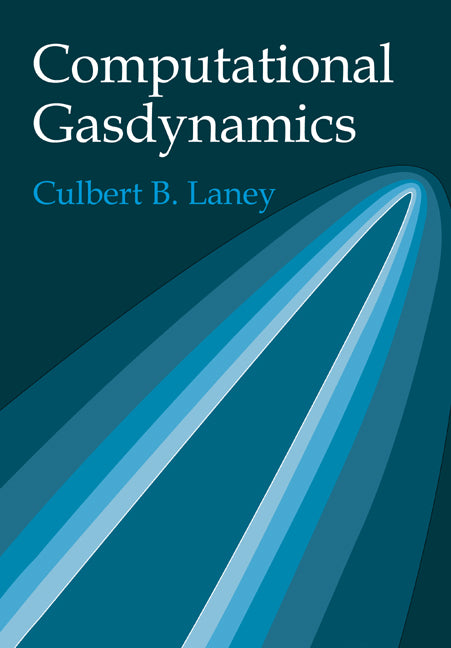Freshly Printed - allow 8 days lead
Couldn't load pickup availability
Computational Gasdynamics
Graduate text for aerospace and mechanical engineering students on high-speed gas flows.
Culbert B. Laney (Author)
9780521625586, Cambridge University Press
Paperback, published 13 June 1998
632 pages, 213 b/w illus.
24.3 x 17.3 x 3.3 cm, 0.99 kg
'Computational Gasdynamics, by Culbert Laney, is a wonderful resource. It belongs in the library of any engineer solving problems in compressible flow. It will make an excellent text, but perhaps not for introductory courses. This reviewer commends the author for organising this material and presenting it in clear, concise and understandable manner.' S. Eberhardt, European Journal of Mechanics
Numerical methods are indispensable tools in the analysis of complex fluid flows. This book focuses on computational techniques for high-speed gas flows, especially gas flows containing shocks and other steep gradients. The book decomposes complicated numerical methods into simple modular parts, showing how each part fits and how each method relates to or differs from others. The text begins with a review of gasdynamics and computational techniques. Next come basic principles of computational gasdynamics. The last two parts cover basic techniques and advanced techniques. Senior and graduate level students, especially in aerospace engineering, as well as researchers and practising engineers, will find a wealth of invaluable information on high-speed gas flows in this text.
Preface
1. Introduction
Part I. Gasdynamics Review: 2. Governing equations of gasdynamics
3. Waves
4. Scalar conservation laws
5. The Riemann problem
Part II. Computational Review: 6. Numerical error
7. Orthogonal functions
8. Interpolation
9. Piecewise-polynomial reconstruction
10. Numerical calculus
Part III. Basic Principles of Computational Gasdynamics: 11. Conservation and other basic principles
12. The CFL condition
13. Upwind and adaptive stencils
14. Artificial viscosity
15. Linear stability
16. Non-linear stability
Part IV. Basic Methods of Computational Gasdynamics: 17. Basic numerical methods for scalar conservation laws
18. Basic numerical methods for the Euler equations
19. Boundary treatments
Part V. Advanced Methods of Computational Gasdynamics: 20. Flux averaging I: flux-limited methods
21. Flux averaging II: flux-corrected methods
22. Flux averaging III: self-adjusting hybrid methods
23. Solution averaging: reconstruction-evolution methods
24. A brief introduction to multi-dimensions
Index.
Subject Areas: Mechanics of fluids [TGMF]


